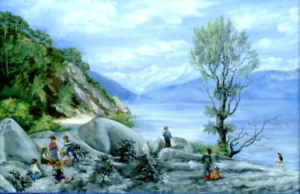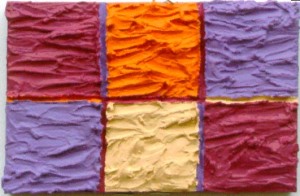Semiotics
semiotics: (GK sema or sign) the study of signs or sign systems, can be applied to verbal or non-verbal systems (fashion, for example, can be seen as language or system of communication)
One of the key methods of analyzing images is semiotics, otherwise called semiology. Semiotics approaches language systems (including verbal language) as systems that are culturally constructed (i.e. not natural). It argues that language works through the production, circulation and exchange of signs.
Two semiotic systems: Ferdinand de Saussure + Charles Pierce
In Sausurre’s system:
A sign has three primary characteristics:
1) A sign has a physical form or sound when spoken (the written or spoken word or an image, e.g. rose,  This is the signifier.
This is the signifier.
2) A sign refers to something other than itself, a concept or an mental construct. This is called the signified. In this case, the rose is often used as a symbol of loveor beauty. The two are hard to separate, but semiotics emphasizes a third term to do this: the referent. This is the thing that the sign (or both the signifier and signified) point to in the real world.
3) Semiotic analysis argues that our perception of the world is constructed or shaped. Language divides words into categories and in doing so determines our sense of things and their value to us. These categories work by means of differences. A cat is a cat because it is not a dog. This third feature reflects the influence of structuralist thought on semiotic analysis.
In Pierce’s system, the sign is made up of two component parts: a sign which is the word or image (as above0 and the Interpretent—the meaning (love). The object, like the referent in Saussure’s theory, is the object that is recalled.
Sign Types—Iconic, Indexical and Symbolic Signs:
Iconic: Iconic signs always resemble what they signify. A photo is thought of as iconic because it depicts what it refers to. One can also think of religious icons as iconic (statues of the Madonna).
Indexical: Indexical signs have signifiers that act as evidence that an event or occurance has taken place: smoke for fire; sweat for effort.
Symbolic: Symbolic signs are arbitrarily linked to their references. They inspire culturally agreed upon (and historically changing) associations
Central Concepts:
Arbitrariness of Signs: Signs are not integral to things themselves but arbitrarily defined.
Arbitrary and Shared Codes: Arbitrary signs must, nonetheless, be socially agreed upon. This presumes that signs are neither fixed or single but polysemic (GK full/many; signs): capable of several meanings. For example: the Union Jack is symbol of the British empire, and the monarchy but it will be interpreted differently by the cultural group appropriating it--pro and anti-monarchists. The way in which the exact meaning is achieved is determined by context. It can sometimes be grounded or anchored by text as in the form of a caption.
Sign Functions—Denotation and Connotation:
denote: to serve as an indication of (an arbitrary mark for);
connote: to convey in addition to exact, explicit meaning; to convey meaning through culturally agreed upon associations.
e.g. the word Red denotes a colour in the spectrum; it also connotes fierceness and passion



















